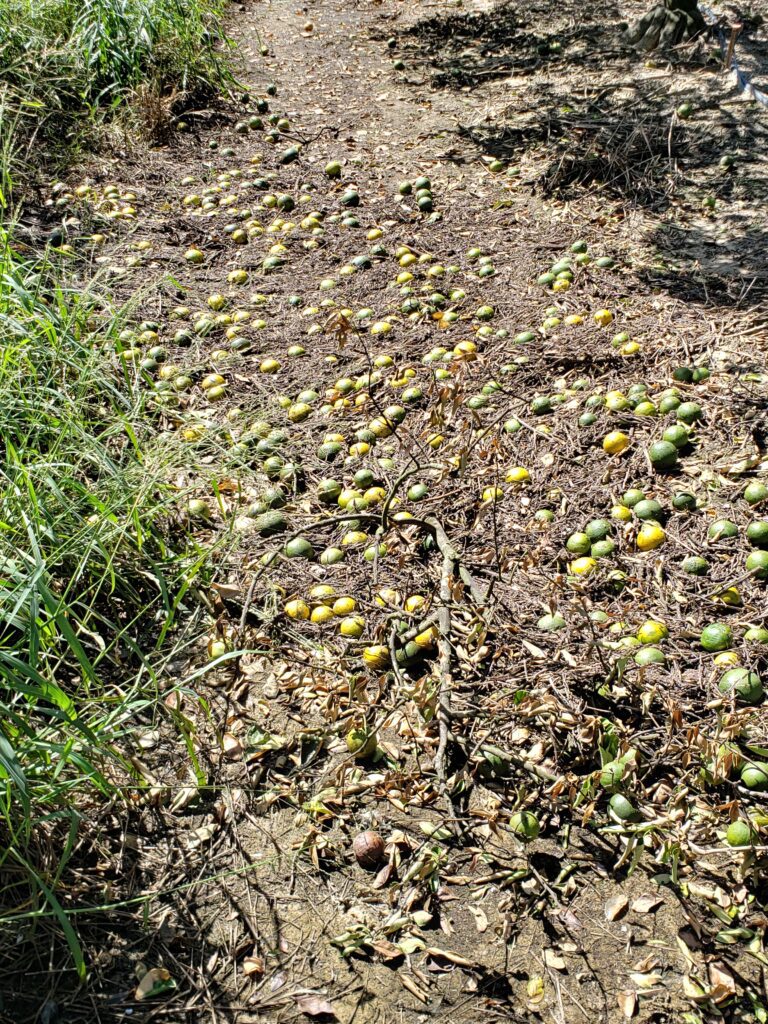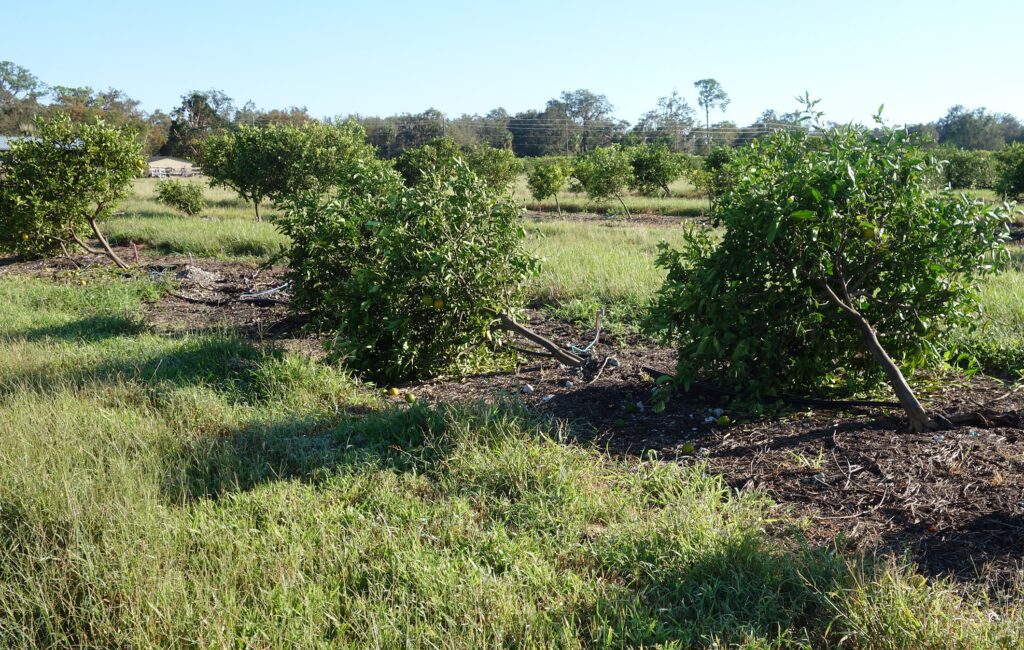Growers’ Early Optimism, Resilience Shine Despite Hurricane Ian
by TERESA SCHIFFER
photo by MONGI ZEKRI/SWFREC
Despite the continued losses due to greening and a decrease in plantings of new citrus trees, this year was looking pretty good for Florida citrus growers – until Hurricane Ian swept through the state in the last days of September. Some of the state’s hardest-hit areas were the top-producing citrus counties.
Ray Royce, Executive Director of Highlands County Citrus Growers Association, voiced his optimism in the days preceding the epic storm.
“Right now, those groves that are being properly managed seem to have a relatively decent crop on them, and fruit seems to be sizing well. I am hopeful that with the combination of that and more growers using growth regulators and other things, maybe our drop rate will be cut significantly, and perhaps we’ll still see a statewide 40 million boxes.”
Those hopes were later dashed when the USDA released its official 2022-2023 forecast of 28 million boxes of oranges, down 32 percent from the previous year. If realized, the crop will be the lowest since 1941-1942, when oranges hit 27.2 million boxes. The forecast for grapefruit was 2 million boxes, down 40 percent from the previous season. All estimates were made from calculations taken before Hurricane Ian hit the state.
The 2021-22 season was Florida’s lowest since World War II in terms of citrus production, with 45.1 million boxes produced — 91 percent of those boxes were filled with oranges. That was a 22 percent decrease from the previous year’s total of 57.9 million boxes of all citrus produced. Nearly 20 years of citrus greening has taken a massive toll on Florida’s citrus industry.
“There’s no doubt the number of trees is down, and there’s no doubt that some groves have been abandoned,” Royce said in September. “I am just hopeful that we’ll have a little bit better fruit set this year, and that with some of the groves that are still in production, the men and women have done some things that we can cut the drop rate. It’s the drop rate that’s just been killing everything.”
Florida Citrus Mutual CEO Matt Joyner echoes Royce’s statements regarding the early optimism of growers.
“Certainly there was some encouragement out there that it looked like we had a good fruit set, the fruit was sizing up pretty well,” he says. “I think that people were feeling generally optimistic about what this year’s harvest would bring.”
After the massive hurricane roared through the state, hope turned to dismay as Ian’s winds whipped trees to the ground, tore fruit from branches, and torrential rains inundated groves, leaving some areas still flooded a week later. Even though the storm has passed, growers expect to see the loss of fruit as trees react to stress from the environment.
“If you look at the path of that storm,” Joyner explains, “it really came through the heart of many of our largest citrus-producing counties here in the state. If you go further south, the damage is worse. I think you can see up to 80 percent damage – fruit on the ground – in some places, a lot of standing water. It gets a little better as you get back up to South Polk County and over into the East Polk and the Lake Wales area. Overall, we know that the impact is going to be significant to the industry.”
Florida Citrus Hall of Famer Vic Story knows what Florida’s weather can do to a grove. His family has been growing citrus in Central Florida for nearly a century. The Story Companies’ orange groves have survived storms, freezes, pests, and everything else Mother Nature has thrown at them so far, and they intend to keep on going.
Story describes the damage he has seen in the aftermath of Ian.
“North of Frostproof, in the South Polk County area, not too bad. I mean, there’s some fruit on the ground and some trees blown over, but not as bad as the hurricane five years ago, Irma. South Polk County, Hardee, and Okeechobee are worse than five years ago. We’ve got trees down, we’ve got a lot of fruit down, a lot of limbs broken.”

Prior to the storm, the past year’s weather had been quite favorable for citrus growers. But Florida grove operators are familiar with how fickle the subtropical climate here can be, and most remain undaunted by the recent tempest.
Joyner says that for seasoned Florida citrus growers, the storm damage is just one more thing to take in stride.
“The hurricane has been a bit of a setback, but we’re tough, we’re used to hurricanes, freezes, pests, and diseases. We’re going to pick up, get through this season, and move on.”

